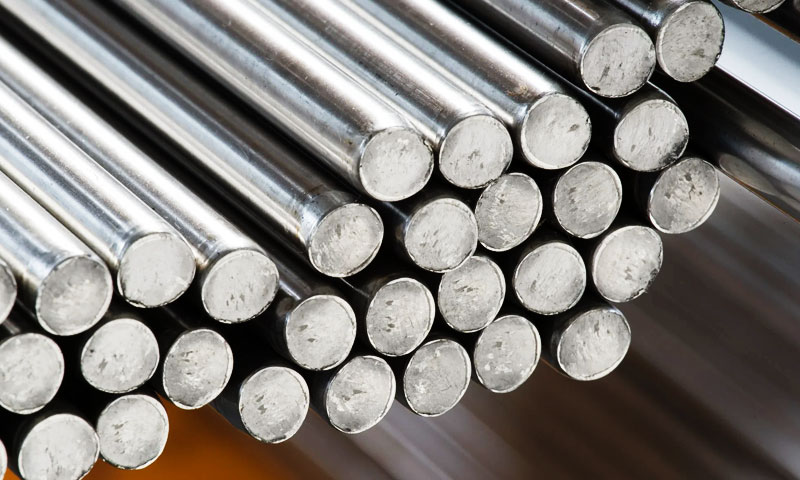1. Įvadas
1.4122, commonly referenced by its European designation X39CrMo17-1, is a martensitic chromium stainless steel designed to deliver a blend of kietumas, wear resistance and reasonable corrosion performance.
It occupies a practical middle ground between tool steels and corrosion-resistant stainless grades: hardenable by heat treatment to high strengths and abrasion resistance, yet offering better resistance to corrosion than many carbon steels.
2. Kas yra 1.4122 Nerūdijantis plienas
1.4122 (Taip pat vadinamas X39CrMo17-1) yra a martensitic chromium Nerūdijantis plienas — a hardenable, magnetic stainless grade designed to deliver a balance of high hardness/wear resistance ir Vidutinis atsparumas korozijai.
Engineers choose 1.4122 for components that require sharp edges and durable cutting surfaces (Stalo įrankiai), precision shafts and spindles, wear parts and certain valve or pump components where moderate corrosion resistance is adequate.
It is distinct from austenitic stainless steels (Pvz., 304) that are non-magnetic and highly corrosion-resistant, and from ferritic grades that are not hardenable by quenching;
1.4122’s defining characteristic is its martensitic microstructure after quenching, which produces high hardness and strength.
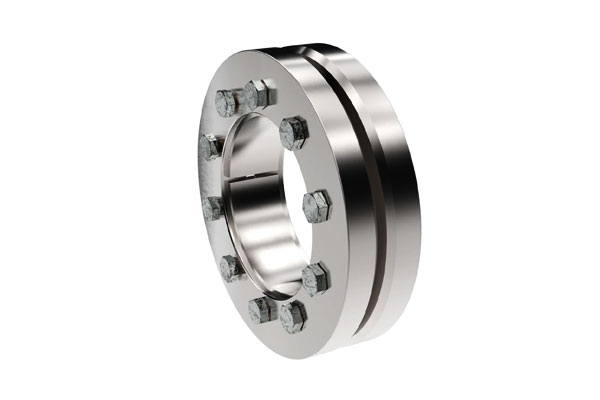
3. Cheminė sudėtis 1.4122 Nerūdijantis plienas
Below is a clean, professional table showing the chemical composition ranges for 1.4122 (X39CrMo17-1) stainless steel together with a concise, engineering-focused description of the role each element plays in this alloy.
| Elementas | Diapazonas (wt%) | Primary role(s) — concise |
| C (Anglies) | 0.33–0.45 | Main hardening agent — increases martensite hardness and wear resistance; reduces toughness and weldability at high levels. |
| Kr (Chromas) | 16.5–17.5 | Provides corrosion passivity and contributes to hardenability and carbide formation. |
| MO (Molibdenas) | 0.80–1.30 | Improves hardenability, strength and resistance to localized corrosion. |
| Į (Nikelis) | ≤1.00 | Minor toughness aid; kept low to retain martensitic response. |
| Mn (Manganas) | ≤1.50 | Deoxidizer and mild hardenability aid. |
Ir (Silicis) |
≤1.00 | Deoxidizer and modest solid-solution strengthener. |
| P (Fosforas) | ≤0.04 | Impurity — kept low to avoid embrittlement and fatigue loss. |
| S (Sieros) | ≤0,015 | Minimized (not a free-machining grade) because it lowers toughness and fatigue performance. |
| Fe (Lygintuvas) | Pusiausvyra | Matrix element — forms the martensitic steel base. |
| Trace elements (Iš, V, Cu, N, kt.) | paprastai <0.05–0.20 | Small micro-alloying effects or tramp elements; can refine grain or slightly modify properties when present. |
4. Mechaninės savybės 1.4122 Nerūdijantis plienas
Mechanical properties vary with heat treatment state. Below are representative ranges used for design guidance.
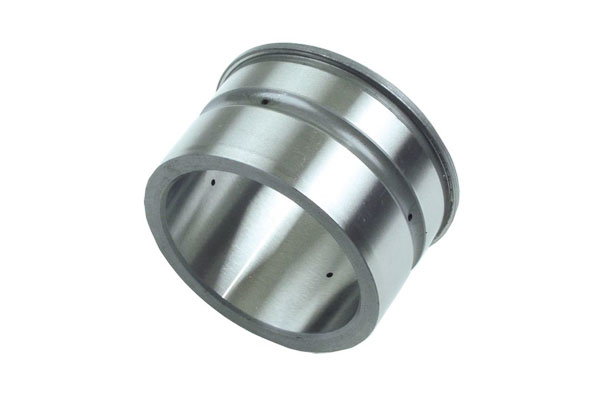
| Sąlyga / treatment | Kietumas (HRC) | Tempimo stiprumas (UTS, MPA) | 0.2% Proof / Derlius (MPA) | Pailgėjimas (A, %) | Charpy V-Notch (apytiksliai., J) |
| Minkšta / normalizuotas (Pristatymas) | ~20–30 HRC | ~500–700 MPa | ~300–450 MPa | 10–18 % | 30–60 J |
| Gesintas & tempered → ~40 HRC (typical engineering temper) | ≈38–42 HRC | ~800–950 MPa | ~600–800 MPa | 8–12 % | 15–30 j |
| Gesintas & tempered → ~48–52 HRC (Aukštas kietumas) | ≈48–52 HRC | ~1,000–1,300 MPa | ~800–1,100 MPa | 3–8 % | 5–20 j |
| Maximum hardening (šalia 55+ HRC) | >55 HRC | >1,300 MPA | aukštas (approaching UTS) | žemas (<3 %)* | žemas (<10 J) |
5. Magnetic and Physical Properties of 1.4122 Nerūdijantis plienas
Understanding the magnetic and physical properties of 1.4122 stainless steel is critical for design engineers, particularly when specifying components for precision machinery, įrankiai, or applications where thermal expansion and conductivity matter.
| Nuosavybė | Tipinė vertė | Inžinerinės pasekmės |
| Tankis | 7.75–7.80 g/cm³ | Weight calculations, dynamic load, Komponentų dizainas |
| Šilumos laidumas | 19–24 w/m · k | Heat dissipation, machining and thermal distortion |
| Šilumos išsiplėtimo koeficientas | 10–11 ×10⁻⁶ /K | Dimensional stability under thermal cycles |
| Specifinė šiluma | ~ 460 J/kg · k | Thermal management during processing |
| Magnetinis elgesys | Feromagnetinis | Consider in sensor proximity, electronic interference, magnetic assembly |
6. Atsparumas korozijai
1.4122 stainless steel provides Vidutinis atsparumas korozijai, superior to plain carbon steels but inferior to austenitic stainless steels.
Environments where it performs acceptably
- Fresh water and mildly oxidizing industrial atmospheres
- Organic acids and mild chemical environments, when polished or passivated
Apribojimai
- Not recommended for Chlorido turtinga aplinka (Jūros vanduo, sūrymas) where pitting and crevice corrosion become significant.
- Localized corrosion resistance decreases with increasing hardness and tempering that expose microstructural heterogeneities.
Surface finishing and passivation
- Poliravimas to a fine finish and Cheminis pasyvavimas (Pvz., nitric acid treatment) improve corrosion performance by strengthening the passive film.
- Dangos (dažai, dengimas) or cathodic protection are common for long service life in marginal environments.
7. Heat Treatment and Hardening
Terminis apdorojimas tailoring is central to using 1.4122 veiksmingai.
Typical hardening schedule
- Austenitizavimas: heat to roughly 980–1020 °C (typical range for martensitic stainless steels; exact temperature depends on section size and furnace control) to form austenite.
- Gesinimas: rapid cooling in oil or polymer quench to transform to martensite. Water quenching may be used but increases risk of distortion and cracking.
- Grūdinimas: reheat to 150–600 ° C. depending on required final hardness/toughness balance.
Lower temper temperatures yield higher hardness and lower toughness; higher temp yields lower hardness but better ductility and impact resistance.
Hardening response
- Carbide-forming elements (Kr, MO) and carbon content drive hardenability. 1.4122 exhibits good response allowing designers to select temper cycles for specific mechanical targets.
Efektai
- Strength increases dramatically after quench and temper.
- Tvirtumas can be restored partially by tempering; there is a well-known tradeoff between hardness and toughness.
- Aparatas generally worsens after hardening; most machining is done in annealed or partially tempered conditions.
8. Machinability and Fabrication
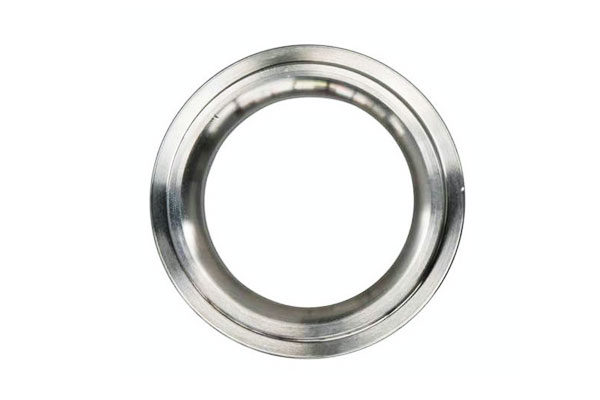
Aparatas
- Medium in annealed condition. In soft condition, 1.4122 machines comparable to other martensitic grades with appropriate tooling and cutting speeds.
Use sharp high-speed tooling, adequate coolant and conservative feeds when machining hardened portions. - Poor when hardened. Kietumas >45 HRC substantially increases tool wear; grinding and carbide tooling are typical.
Suvirinamumas
- Ribotas. High carbon and martensitic structure make the steel susceptible to hydrogen-induced cold cracking. Welding generally requires:
-
- Įkaitintis (Pvz., 150–250 °C depending on thickness)
- Low hydrogen electrodes
- Post-weld tempering or PWHT to relieve residual stresses and soften the HAZ
- For critical parts, welding is avoided or performed with post-weld heat treatment.
Formavimas
- Šaltas formavimas: limited in hardened state; better to form in annealed condition and then harden.
- Karštas formavimas: may be used within controlled windows but requires subsequent heat treatment to restore designed properties.
9. Privalumai ir apribojimai
Privalumai 1.4122 Nerūdijantis plienas
- Geras sukietėjimas: can be heat treated to a wide range of hardness and strength values.
- Balanced corrosion resistance: superior to carbon steels in many environments.
- Atsparumas nusidėvėjimui: suitable for cutting edges, shafts and lightly loaded wear parts.
- Magnetinis: useful where ferromagnetic behaviour is needed.
Apribojimai 1.4122 Nerūdijantis plienas
- Weldability limitations — requires preheat and PWHT for critical joins.
- Cold formability: poor in hardened state; must be formed in annealed condition.
- Corrosion limits: not recommended for seawater or high chloride environments without protective measures.
- Machining when hardened: high tool wear, special tooling required.
10. Pramoninės programos 1.4122 Nerūdijantis plienas
1.4122 is used where a combination of high surface hardness, atsparumas nusidėvėjimui, ir vidutinio sunkumo atsparumas korozijai yra reikalingi:
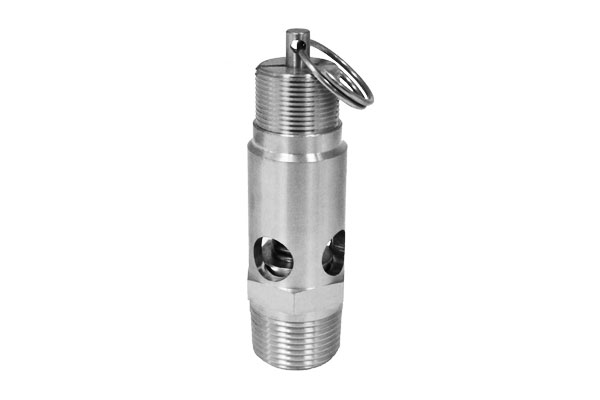
- Cutlery and surgical tools: peiliai, scissors and razors benefit from the balance of hardness and stainless behaviour.
- Mechanical engineering: velenai, verpstės, pins and small gears that require precision, edge retention and good wear lifetime.
- Pumps and valves: stiebai, seats and components exposed to fresh water or buffered fluids.
- Tooling and molds: for polymer processing and light tooling duties where corrosion resistance is helpful compared with plain tool steels.
- Other niche uses: Guolių lenktynės, small structural components, and certain fasteners where hardness and magnetic response are advantageous.
11. Comparison with Related Stainless Steels
1.4122 (X39CrMo17-1) yra a martensitic chromium stainless steel with balanced hardness, atsparumas korozijai, and wear properties.
To guide material selection, it is helpful to compare it with other commonly used martensitic and chromium stainless steels, įskaitant 1.4034 (X46Cr13) ir 1.4112 (X90CrMoV18).
| Nuosavybė / Lydinys | 1.4122 (X39CrMo17-1) | 1.4034 (X46Cr13) | 1.4112 (X90CrMoV18) | Engineering Notes |
| Anglies (C) | 0.36–0.44% | 0.42–0.50% | 0.85–0.95% | Carbon controls hardness and wear resistance; higher C increases hardness but reduces ductility. |
| Chromas (Kr) | 16–18% | 16–18% | 16–18% | Chromium provides corrosion resistance; all three are martensitic grades with moderate corrosion resistance. |
| Molibdenas (MO) | 0.8–1,2% | 0–0.2% | 0.8–1,2% | Mo improves pitting and general corrosion resistance, ypač 1.4122 ir 1.4112. |
| Vanadis (V) | Pėdsakas | Pėdsakas | 0.1–0,3% | V increases hardness and wear resistance, naudojamas 1.4112 for high-wear tools. |
| Tempimo stiprumas (MPA) | 800–1100 (gesintas & grūdinta) | 700–1000 | 1000–1400 | 1.4112 is a high-carbon grade designed for maximum wear; 1.4122 balances strength and toughness. |
Kietumas (HRC) |
50–55 | 48–52 | 56–60 | 1.4112 achieves higher hardness due to higher carbon; 1.4122 suitable for tooling and shafts. |
| Atsparumas korozijai | Vidutinis | Vidutinis | Vidutinės prie mažos iki žemos | 1.4122’s Mo addition improves resistance to mild oxidizing environments over 1.4034. |
| Aparatas | Vidutinis | Gerai | Vargšas | Aukšto anglies 1.4112 is more difficult to machine; 1.4122 balances machinability with hardness. |
| Tipiškos programos | Stalo įrankiai, įrankiai, siurblio velenai, vožtuvai | Stalo įrankiai, Chirurginiai instrumentai, Mechaninės dalys | High-wear tools, peiliai, industrial blades | Selection depends on required hardness, atsparumas korozijai, and machining constraints. |
12. Išvada
1.4122 (X39CrMo17-1) is a practical martensitic stainless steel that provides a versatile combination of kietumas, wear resistance and moderate corrosion resistance.
Its capability to be tailored through heat treatment makes it a go-to choice for cutlery, velenai, valve parts and tooling applications where a compromise between stainless behaviour and high hardness is required.
DUK
What is the typical hardness range achievable for 1.4122 Nerūdijantis plienas?
In delivery/softened condition about 27–33 HRC. After quench and temper the alloy can be adjusted typically to ~40–55 HRC depending on tempering temperature and section size.
Yra 1.4122 stainless steel suitable for seawater service?
No — it has only moderate chloride resistance. For seawater or highly corrosive environments, select duplex or austenitic stainless steels with superior pitting resistance.
Can I weld 1.4122 Nerūdijančio plieno komponentai?
Welding is possible but challenging. Use preheat, low-hydrogen consumables and post-weld tempering to avoid cracking and restore toughness.
How does heat treatment affect toughness?
Tempering at higher temperatures improves toughness but reduces hardness. Select tempering temperature to achieve the required balance for fatigue and impact loads.
Priklausomai nuo programos, 1.4034 may be an economical substitute for lower performance needs; 1.4112 or other high-C martensitics may be used where extreme hardness is required but note differences in corrosion and toughness.
